How to choose a new CRM
Hi, my name is Tam and I’m the Head of Growth at Webprofits. Today I’ll be outlining the process I recommend for selecting a new CRM platform.
Transcript:
Martech has blown up in the last few years and there are dozens, if not hundreds, of CRM platforms to choose from. I won’t be recommending any specific platforms as I believe there are different solutions for different businesses, but I will be sharing the process I used when we decided we needed a new CRM earlier this year.
Start with a brief
As with most projects, it’s best to start by writing a brief. Outline all of the problems that you believe a new CRM will solve, and all of the features and benefits that you hope this new CRM will bring to the table.
As well as give you a reference point when conducting research, it can act as a proposal document to get the new platform approved by your CEO, director or manager.
Once you’ve compiled the document, I recommend you take the features that you’ve identified and list them in a spreadsheet. Make a note of whether they are nice to have, or non-negotiable.

A few things to consider that some people neglect are;
- How much support is there in the onboarding process?
- What level of support is provided ongoing?
- How does the cost change as you add more team members?
- How does the cost change as you increase the number contacts or emails?
- How does it integrate with the rest of your tech stack?
- How much tech or developement support will you need to set it up?
- Do they invest in creating new features?
These are all questions you should consider on top of your unique requirements for a CRM.
Research the platforms
Now it’s time to see what’s out there. There are plenty of well known CRMs that you should take the time to check out, but also search for CRMs that are specific for your industry.
At this stage of your research, you are just looking at what’s available and so you don’t need to speak with a sales rep, just spend 5 to 10 minutes looking at their websites. You should jot down which platforms you’ve looked at, whether or not they look like they meet your criteria, and an estimate of the price you will need to pay.
From here, create a shortlist of 3 to 5 platforms that you would consider and list them horizontally in your spreadsheet.

Book a demo
Now it’s time to get into the nitty gritty and set up a time for a demo with each platform on your shortlist. Most companies will ask you specifically what you want to see so use your brief document to help guide the demo and come up with questions.
If you feel comfortable doing so, send the brief to the person providing the demo before hand. This can help them get a better idea of what you’re looking for so they can deliver the information that you need to make a decision.
It’s likely that the demos will uncover features and benefits that you hadn’t considered. These can be great but don’t let them distract you too much, make sure you don’t compromise on the features you identified because they’ve promised something shiny and new.
Take notes of all your demos so you can keep track of what was discussed and then go back to your spreadsheet. You should now be able to list which platforms are able to deliver on all of your required features. If not, go back to them and ask more questions until you are comfortable that you have all the information you need.
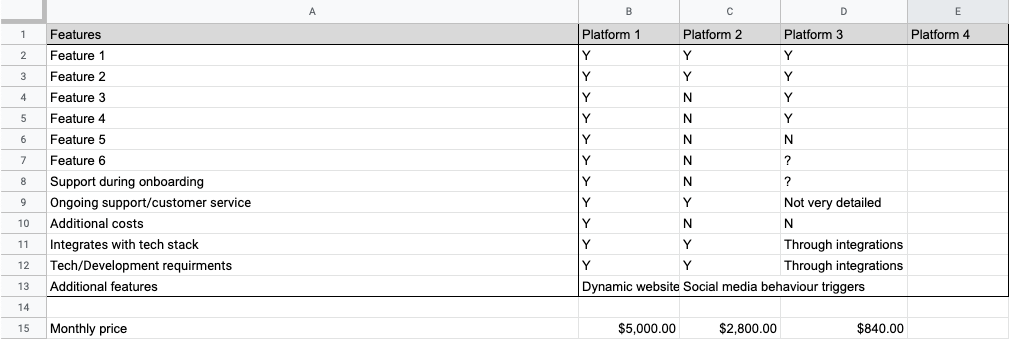
Select the platform that is right for you
The next step is harder than it may seem. The truth is, it’s unlikely that any platform you choose will be able to do everything that you want, and fit within your price range. You will probably have to compromise on some features or the price so bear that in mind when evaluating your options.
Have a look at your spreadsheet, which is now a selection matrix, and evaluate all of your options. Are any of them unable to deliver non-negotiables? Did you dislike the interface when going through the demo? Was there something about the process of the demo that you didn’t like? This should rule them out immediately. The rest is up to you.
Provide feedback to the platforms that you’ve decided not to go with and they will often come back to you with alternative ways to get the features you’re looking for. Also, let the successful company know why you decided to go with them, and what their perceived shortcomings were so that they can provide a better onboarding and ongoing experience to you.
Bonus tip: negotiate!
You’re likely to be paying this company every month for a number of years so it’s worth trying to make a little extra saving, especially if you’re compromising on some of the features or price. The bigger your account the more wiggle room you’ll have to get a better price but it never hurts to ask.
That should give you everything you need to select a new CRM but don’t rest yet. The hard work of actually implementing it starts now. This is particularly the case if you’re transferring from an existing one so good luck.
Thanks for watching, and I’ll be back soon with more.





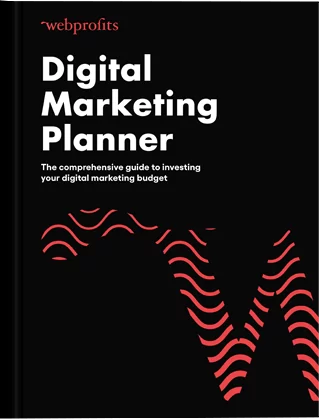
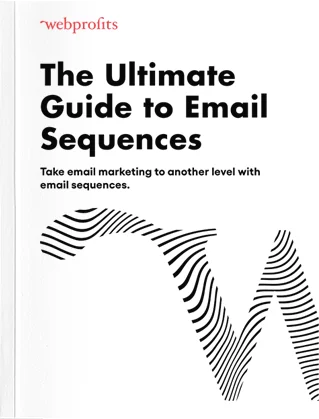
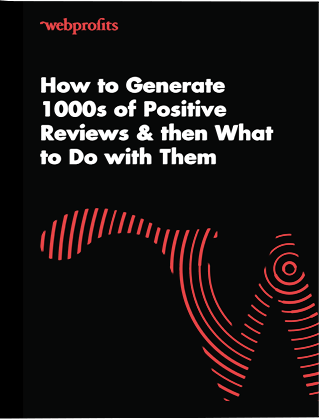


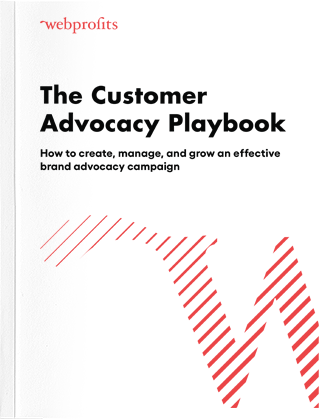


Hi Tam, thanks for the article / video.
After reading it however I found 2 critical points that are skipped over in a very brief way. The Tech stack and the CRM Type / Team usage.
1. Integrations and Tech Stack.
The Integration aspect is huge for a CRM. Listing the tools you use and understanding if your CRM can integrate with them is a critical part of implementation. This is also probably the biggest additional cost of any CRM Implementation.
I normally make a list of systems that we would want to talk to the CRM and use that to help narrow down what I am using. I score these integrations with the following score card:
1. integration out of the box
2. third party integration(Zapier),
3. API with documentation
4. no integration option.
This can help me narrow down my implementation risk very quickly.
2. CRM Type and Team Usage.
Not all crms do the same thing. Some are aimed at email marketing and online web forms whilst others are used as a customer database with workflow rules.
Knowing what type of CRM you need and what departments will use it can help reduce your analysis effort significantly.
Sometimes this can mean a tool like Zoho CRM becomes very appealing because of how it can be customised over say coppercrm which is really about helping you know your customer for up-selling in a sales team using G-suite.
I think overall the article is a great way to start but these 2 points have always seemed to cause the biggest on boarding risk in my experience.
Hope that helps your readers.
Thanks for your comments, Mark!
I did think about including something on integrations but as Zapier integrates with pretty much everything these days, I decided to leave it out.
With regards to CRM type, I would hope that’s the kind of thing people would record when listing their requirements.
Both very valid points though, thanks again